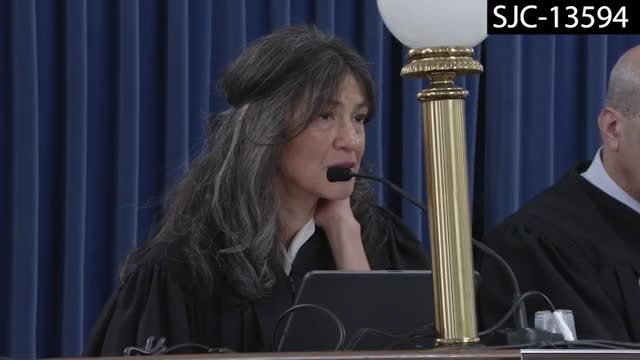Juror Concerns Spark Controversy Over Eyewitness Testimony
November 01, 2024 | Judicial - Supreme Court, Judicial, Massachusetts
This article was created by AI summarizing key points discussed. AI makes mistakes, so for full details and context, please refer to the video of the full meeting. Please report any errors so we can fix them. Report an error »

In a recent government meeting, discussions centered around the complexities of jury selection and the implications of jurors' responses to questions posed during trials. A significant point of contention arose regarding the appropriateness of a prosecutor's question that asked jurors if they could convict based solely on eyewitness testimony without scientific evidence.
Participants in the meeting highlighted concerns that some jurors expressed a need for DNA or fingerprint evidence before reaching a conviction. This sentiment was seen as a legitimate concern, particularly given the credibility issues associated with eyewitness accounts. While some jurors were deemed credible by the trial judge, others struggled with the phrasing of the questions posed to them, leading to varied responses.
The debate focused on whether the prosecutor's question was improperly framed. Some argued that the question could have been better articulated to allow jurors to express nuanced opinions, as the original wording did not accommodate the complexity of their decision-making process. Critics of the question suggested that it forced jurors into a binary response, which could undermine the fairness of the trial.
Despite the contention over the question's phrasing, some meeting participants defended its legality, asserting that it did not compel jurors to commit to a verdict prematurely. They emphasized that the jurors' answers indicated they were still capable of being fair and impartial, regardless of their initial discomfort with the question.
The discussion also touched on the broader implications of juror selection and the rights of the prosecution in excluding jurors based on their responses. It was noted that while peremptory challenges allow for the exclusion of jurors without cause, the focus should remain on ensuring that those who are seated are fair and impartial.
Overall, the meeting underscored the delicate balance between ensuring a fair trial and the challenges posed by juror perceptions and the framing of questions during jury selection. The outcome of these discussions may influence future practices in jury selection and the formulation of questions posed to potential jurors.
Participants in the meeting highlighted concerns that some jurors expressed a need for DNA or fingerprint evidence before reaching a conviction. This sentiment was seen as a legitimate concern, particularly given the credibility issues associated with eyewitness accounts. While some jurors were deemed credible by the trial judge, others struggled with the phrasing of the questions posed to them, leading to varied responses.
The debate focused on whether the prosecutor's question was improperly framed. Some argued that the question could have been better articulated to allow jurors to express nuanced opinions, as the original wording did not accommodate the complexity of their decision-making process. Critics of the question suggested that it forced jurors into a binary response, which could undermine the fairness of the trial.
Despite the contention over the question's phrasing, some meeting participants defended its legality, asserting that it did not compel jurors to commit to a verdict prematurely. They emphasized that the jurors' answers indicated they were still capable of being fair and impartial, regardless of their initial discomfort with the question.
The discussion also touched on the broader implications of juror selection and the rights of the prosecution in excluding jurors based on their responses. It was noted that while peremptory challenges allow for the exclusion of jurors without cause, the focus should remain on ensuring that those who are seated are fair and impartial.
Overall, the meeting underscored the delicate balance between ensuring a fair trial and the challenges posed by juror perceptions and the framing of questions during jury selection. The outcome of these discussions may influence future practices in jury selection and the formulation of questions posed to potential jurors.
View full meeting
This article is based on a recent meeting—watch the full video and explore the complete transcript for deeper insights into the discussion.
View full meeting
